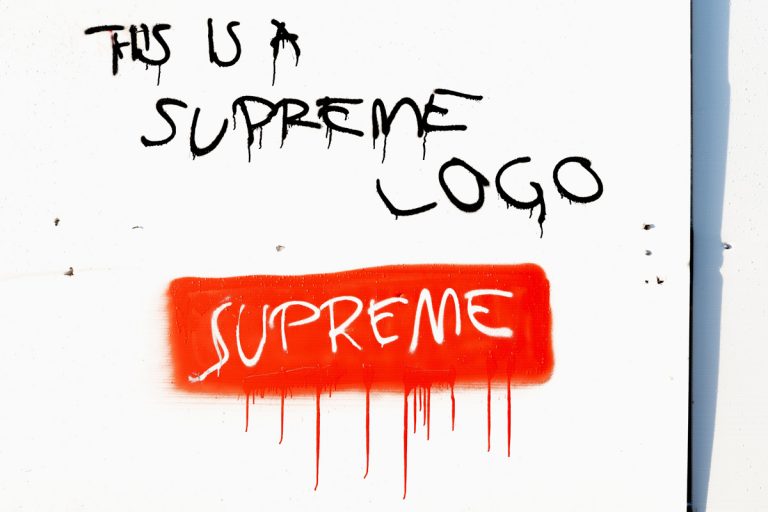VF Corp just acquired Supreme for $2.1 billion. Can Supreme survive this?

When VF Corporation announced on Monday 9 November that it would acquire streetwear must-have Supreme for $2.1 billion (£1.5 billion), fashion followers lost it. Why? Because, when it comes to Supreme, which started in 1994 as a single New York shop selling to the local skate community, this move was nothing like the brand’s ethos we had learned to love along the years.
VF Corp, which owns brands such as Vans, The North Face, Timberland, and Dickies, was considered as the polar opposite of Supreme. And yet, here we are. So what does this mean for Supreme and will it be able to survive this sell-out move?
Supreme’s success has been based on its independent (and sometimes uncompromising) attitude while the brand kept demand high and supply low by releasing weekly drops of new products in very small quantities. Currently, the brand generates more than $500 million in annual revenues, up from around $200 million in 2017.
Speaking of 2017, that year, Supreme’s founder James Jebbia, who was originally the manager of Stüssy in New York in the early 1990s, sold half the business to the private-equity firm Carlyle Group, which acquired a majority stake for $500 million that valued at $1 billion. Following Carlyle’s backing, Supreme entered into collaborations with Levi’s and Louis Vuitton.
This previous acquisition had already come as a big surprise to Supreme die-hard fans, so imagine the impact the recent news had on them. More than 60 per cent of Supreme’s revenue comes from online orders and it now expects revenues to grow eight to 10 per cent over the next three years.
But from one acquisition to another, this raises the question of whether Supreme can keep the elements that made it so desirable in the first place. Jebbia once told the New York Times that the streetwear brand “needs to be cool to survive.” By the way things look, while Supreme might manage to survive, its cool factor might not.
Of course, VF Corp’s chief executive Steve Rendle said the company would take a “hands-off” approach to managing Supreme, which in itself should reassure fashion enthusiasts that no, Supreme is not about to change completely. In reality, the brand said goodbye to its cult status long ago, when it partnered with Louis Vuitton on a high-profile collaboration that reached consumers far beyond the skate community.
Sales were growing fast, and to skaters and fashion insiders, whatever subcultural appeal Supreme had was already long gone. The battle of the niche versus the mass cool began for the New York brand. But that didn’t mean Supreme was no longer cool, as the factors that shape a brand’s image are based on more than exclusivity. A study published in 2019 by a group of researchers led by Caleb Warren, an associate professor of marketing at the University of Arizona, looked at what determines whether shoppers perceive a brand as cool and found 10 omnipresent traits.
Subcultural appeal, originality, authenticity, rebelliousness, energy, and aesthetic appeal were all on the list. One important part underlying many of the factors mentioned above was what they call ‘autonomy’, meaning that it is necessary for the specific brand to create its own course, regardless of what others expect from it. The study was conducted on different audiences, including one made up of 148 members of a streetwear subreddit, which implies in theory, Supreme’s core audience.
In other words, people from a specific subculture might completely disagree with more ‘mainstream’ fashion followers on what can be described as cool. In that study, people outside of the skate and streetwear subculture deemed Supreme of cool while those in it said it had become a popular mass brand. That’s where the difference between niche cool and mass cool lies.
Just like any other successful brand, trend, or product, for it to be adopted by the general population, it first needs to be seen as cool by a specific subculture that buys into the idea that they stand out from the masses. Once the mainstream starts noticing the specific brand, it then loses its desirability in the eyes of the subculture. They move on to the next thing, and the cycle repeats itself.
That’s exactly what some are expecting for Supreme in the near future, but whether that makes the brand less or simply a different kind of cool depends on who’s looking at it. “We are not coming in to make changes. We’re here to support and enable a high performing business,” said Rendle.
When the transaction will be completed at the end of 2020, Jebbia and its senior leadership team will remain with the business, which implies that Supreme won’t change too much too soon. More collaborations may appear, but then again, Supreme was already a frequent collaborator with The North Face, Vans, and Timberland. It seems that if VF Corp lets Supreme do what it’s always done, then things should not turn sour for the skate staple.





